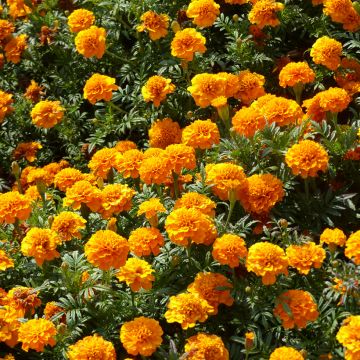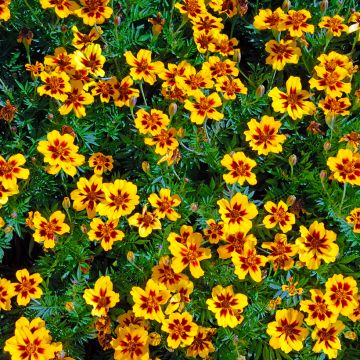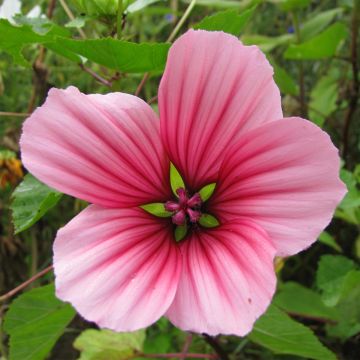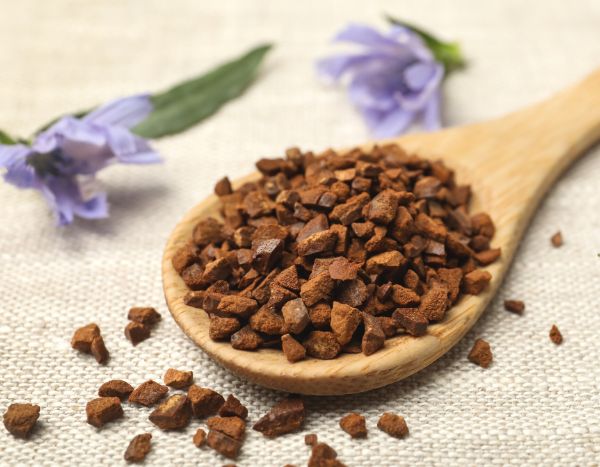

Graine de Pâquerette Tasso Mixed - Bellis Perennis
Bellis perennis Tasso - Daisy
Bellis perennis Tasso
Daisy, Common Daisy, Lawn Daisy, English Daisy
It is unusual that there is no sowing deadline on the packet (there is no small inner bag). This reference no longer exists in the H+M 2018 catalogue.
Claude H., 19/03/2018
Special offer!
Receive a €20 voucher for any order over €90 (excluding delivery costs, credit notes, and plastic-free options)!
1- Add your favorite plants to your cart.
2- Once you have reached €90, confirm your order (you can even choose the delivery date!).
3- As soon as your order is shipped, you will receive an email containing your voucher code, valid for 3 months (90 days).
Your voucher is unique and can only be used once, for any order with a minimum value of €20, excluding delivery costs.
Can be combined with other current offers, non-divisible and non-refundable.
Home or relay delivery (depending on size and destination)
Schedule delivery date,
and select date in basket
This plant carries a 6 months recovery warranty
More information
We guarantee the quality of our plants for a full growing cycle, and will replace at our expense any plant that fails to recover under normal climatic and planting conditions.
Would this plant suit my garden?
Set up your Plantfit profile →
Description
This mix of Tasso Mixed Daisies, also known as Bellis perennis, is a spring essential. Indeed, its early pompom flowers in pastel and candy colours: white, pink, and red brighten up flowerbeds, balconies, and bulbs. Its hardiness allows everyone to enjoy its floribundity.
Bellis perennis means "eternal beauty" and symbolises the Virgin Mary. In the language of flowers, they represent innocence and attachment. Their childish and playful nature indeed heralds the long-awaited spring. It is originally a biennial perennial that prefers cool, well-drained soil. Its size (15 cm (6in)) allows it to fit in the front of flowerbeds, in front of daffodils and tulips, but you can also find a place for it among muscaris and forget-me-nots in pots and containers. Its pompom flowers are simple yet complex: they are slightly flattened balls (3 cm (1in) in diameter) made of multiple very fine petals, positioned very densely with impressive geometric regularity. On some, their tiny yellow heart is barely visible. Their colours are both tender and rich: they range from pure white to deep red, passing through various shades of pink. You can taste them, as daisy petals are edible; sprinkle these little colourful filaments on your salads.
Several small hairy stems from a rosette of dark green leaves bear a single flower at their tip. They are charming when grouped and on their own alongside other smaller flowering plants or bushy foliage. Do not hesitate to remove faded flowers to encourage them to bloom again. You can enjoy their cheerfulness from March to May, which is why they are called "Easter flowers". However, they are also liked by slugs and snails: a line of ash will protect them from these pests.
The Tasso Mixed mix should be sown in summer for transplanting in autumn. So prepare for the arrival of spring with its soft and vibrant colours.
Report an error about the product description
Flowering
Foliage
Plant habit
Botanical data
Bellis
perennis
Tasso
Asteraceae
Daisy, Common Daisy, Lawn Daisy, English Daisy
Cultivar or hybrid
Other Thompson and Morgan seeds
View all →Planting and care
The Tasso Mixed daisy mix is sown in summer, like biennials. The seeds prefer temperatures between 15 and 20 degrees (59 and 68°F) Celsius so that you can sow them outdoors or in a properly ventilated shelter. They will germinate between 7 and 21 days, depending on the conditions.
Sow by broadcasting in a tray or pots filled with potting soil mixed with a bit of sand or vermiculite, cover with a light layer of substrate and keep it moist. The plants will be transplanted and installed in flower beds or garden pots in October. In both cases, you can also plant your spring bulbs simultaneously between the plants. Watch out for snails and slugs, as they are fond of the young shoots of these daisies.
Sowing period
Intended location
Planting & care advice
-
, onOrder confirmed
Reply from on Promesse de fleurs
Haven't found what you were looking for?
Hardiness is the lowest winter temperature a plant can endure without suffering serious damage or even dying. However, hardiness is affected by location (a sheltered area, such as a patio), protection (winter cover) and soil type (hardiness is improved by well-drained soil).

Photo Sharing Terms & Conditions
In order to encourage gardeners to interact and share their experiences, Promesse de fleurs offers various media enabling content to be uploaded onto its Site - in particular via the ‘Photo sharing’ module.
The User agrees to refrain from:
- Posting any content that is illegal, prejudicial, insulting, racist, inciteful to hatred, revisionist, contrary to public decency, that infringes on privacy or on the privacy rights of third parties, in particular the publicity rights of persons and goods, intellectual property rights, or the right to privacy.
- Submitting content on behalf of a third party;
- Impersonate the identity of a third party and/or publish any personal information about a third party;
In general, the User undertakes to refrain from any unethical behaviour.
All Content (in particular text, comments, files, images, photos, videos, creative works, etc.), which may be subject to property or intellectual property rights, image or other private rights, shall remain the property of the User, subject to the limited rights granted by the terms of the licence granted by Promesse de fleurs as stated below. Users are at liberty to publish or not to publish such Content on the Site, notably via the ‘Photo Sharing’ facility, and accept that this Content shall be made public and freely accessible, notably on the Internet.
Users further acknowledge, undertake to have ,and guarantee that they hold all necessary rights and permissions to publish such material on the Site, in particular with regard to the legislation in force pertaining to any privacy, property, intellectual property, image, or contractual rights, or rights of any other nature. By publishing such Content on the Site, Users acknowledge accepting full liability as publishers of the Content within the meaning of the law, and grant Promesse de fleurs, free of charge, an inclusive, worldwide licence for the said Content for the entire duration of its publication, including all reproduction, representation, up/downloading, displaying, performing, transmission, and storage rights.
Users also grant permission for their name to be linked to the Content and accept that this link may not always be made available.
By engaging in posting material, Users consent to their Content becoming automatically accessible on the Internet, in particular on other sites and/or blogs and/or web pages of the Promesse de fleurs site, including in particular social pages and the Promesse de fleurs catalogue.
Users may secure the removal of entrusted content free of charge by issuing a simple request via our contact form.
The flowering period indicated on our website applies to countries and regions located in USDA zone 8 (France, the United Kingdom, Ireland, the Netherlands, etc.)
It will vary according to where you live:
- In zones 9 to 10 (Italy, Spain, Greece, etc.), flowering will occur about 2 to 4 weeks earlier.
- In zones 6 to 7 (Germany, Poland, Slovenia, and lower mountainous regions), flowering will be delayed by 2 to 3 weeks.
- In zone 5 (Central Europe, Scandinavia), blooming will be delayed by 3 to 5 weeks.
In temperate climates, pruning of spring-flowering shrubs (forsythia, spireas, etc.) should be done just after flowering.
Pruning of summer-flowering shrubs (Indian Lilac, Perovskia, etc.) can be done in winter or spring.
In cold regions as well as with frost-sensitive plants, avoid pruning too early when severe frosts may still occur.
The planting period indicated on our website applies to countries and regions located in USDA zone 8 (France, United Kingdom, Ireland, Netherlands).
It will vary according to where you live:
- In Mediterranean zones (Marseille, Madrid, Milan, etc.), autumn and winter are the best planting periods.
- In continental zones (Strasbourg, Munich, Vienna, etc.), delay planting by 2 to 3 weeks in spring and bring it forward by 2 to 4 weeks in autumn.
- In mountainous regions (the Alps, Pyrenees, Carpathians, etc.), it is best to plant in late spring (May-June) or late summer (August-September).
The harvesting period indicated on our website applies to countries and regions in USDA zone 8 (France, England, Ireland, the Netherlands).
In colder areas (Scandinavia, Poland, Austria...) fruit and vegetable harvests are likely to be delayed by 3-4 weeks.
In warmer areas (Italy, Spain, Greece, etc.), harvesting will probably take place earlier, depending on weather conditions.
The sowing periods indicated on our website apply to countries and regions within USDA Zone 8 (France, UK, Ireland, Netherlands).
In colder areas (Scandinavia, Poland, Austria...), delay any outdoor sowing by 3-4 weeks, or sow under glass.
In warmer climes (Italy, Spain, Greece, etc.), bring outdoor sowing forward by a few weeks.



















































